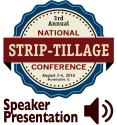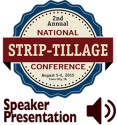Advertise Follow Us
Equipment
Find nut-and-bolts information here about the machinery side of strip-tilling, including planters, drills and air seeders and various related strip-till attachments; self-propelled and pull-type sprayers, tractors, combines, spreaders and toolbars.
ARTICLES
[Podcast] Q&A with Strip-Till Yield Champion David Hula
On this edition of the Strip-Till Farmer podcast, brought to you by Yetter Farm Equipment, Charles City, Va., strip-tiller David Hula shares the keys to his strip-till success.
Read More

















